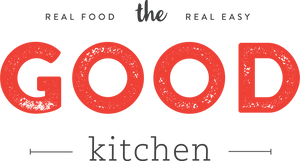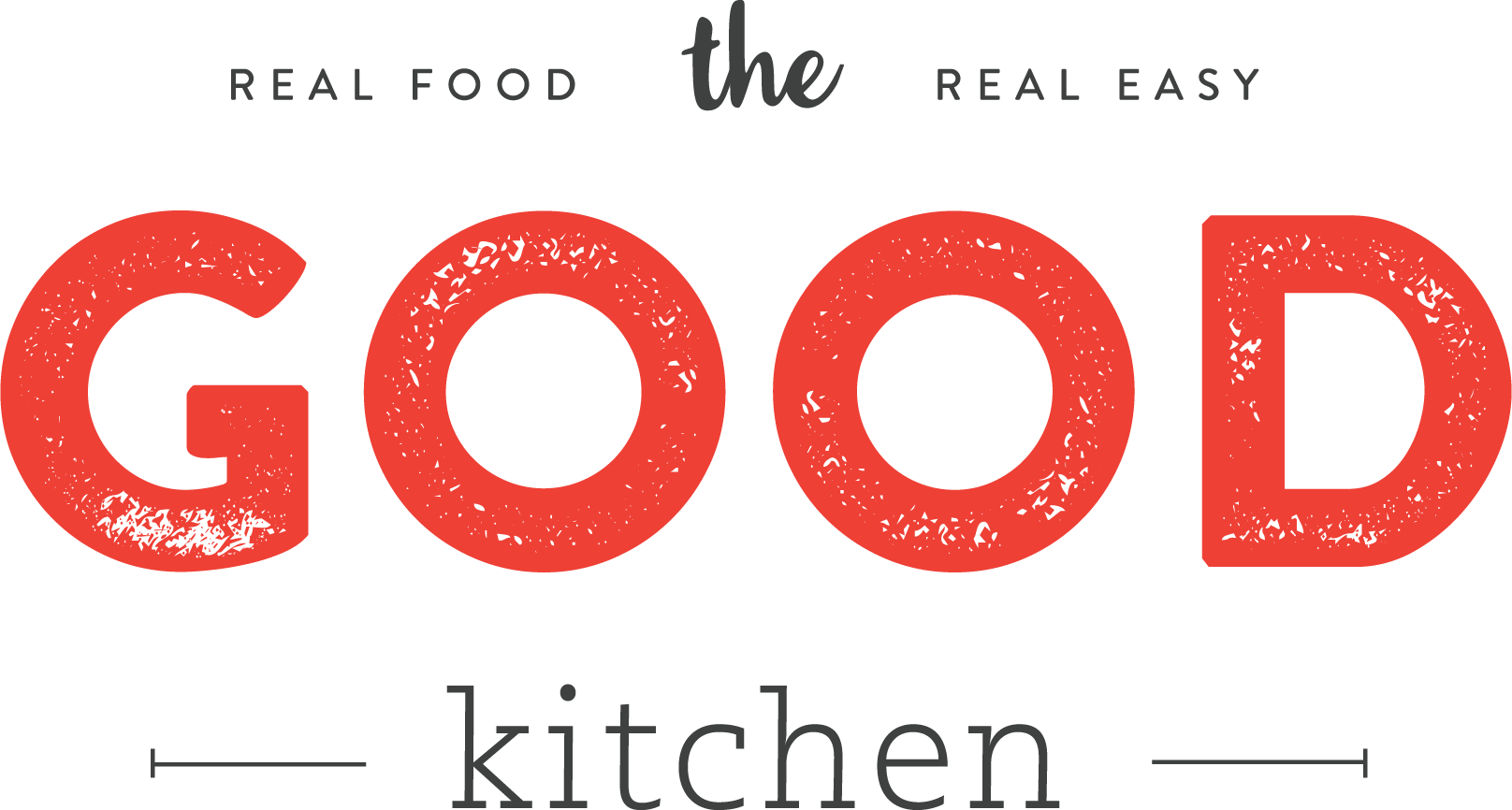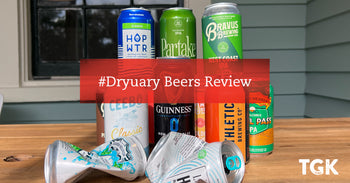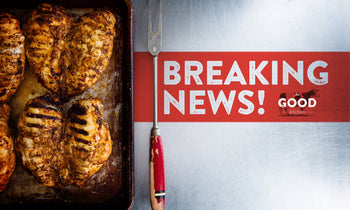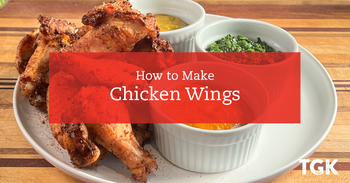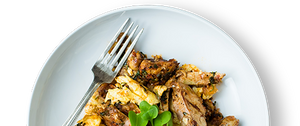10 Questions with Carter
10 Questions with Carter Lewis of The Good Kitchen

We're asking Carter Lewis, co-owner of The Good Kitchen, a few questions.
Last week, we asked these same questions of his business partner and wife, Amber.
How did the idea for TGK first come about?
Amber was (and is) a fantastic cook and we sourced our food from farmer’s markets and Shelley Proffitt, once we moved to Charlotte. Friends liked Amber’s food enough to want to take some home when they came for dinner. Then one offered to pay for any “extra” she could muster up during Sunday’s weekly meal prep. Then, word spread through our gym and we started a trial group of 10 folks paying a flat fee one week in advance, so that Amber could plan a menu and find all the ingredients, then cook for a Sunday drop off.‚Ä® And bam!... word of mouth took over our lives.
What is your background? What were you doing before TGK?
Advertising and it's natural counterpart, fitness. (😉) I was an Art Director, working in agencies for 15 years. It ain't quite "Mad Men" these days, but there were some fun times. It’s a lot of creativity-on-demand, lots of hours and deadlines. You know, so totally different than supplying 200+ customers per week with meals. I also ran a bootcamp program and did freelance design work for 1 or 2 years before being an actual employee of TGK. I grew up in West Virginia and have also lived in Virginia, Georgia, Alabama and Michigan.
Who were your first customers? Are they still customers? How did you ensure they stayed with you through TGK’s growing pains?
April, Rob, Chelsea, Jordan and Phil. Not all of our initial clients are still with us, but we know they’ll probably call us up after they read this. How do you keep customers? Make good food, continue your mission and follow up with fantastic customer service. People are hungry and, more and more, they care where their food comes from. And it goes without saying that folks are busy. That’s why we’re here.
What was the scariest moment of your first year (or your biggest mistake) and what was the solution?
That first December. It seems that eating healthy takes a backseat to holiday parties and Christmas shopping. Didn’t see that one coming. Solution? We cancelled Christmas. Kidding. We were “prepared” for it the next year... and the next year.
What was the smartest thing you did Year One?
I think the smartest thing we did was hire a bookkeeper, customer service rep, head of packaging, distribution lead and delivery driver. Her name was Nancy.
Your team has grown quite a bit since you first started – how have you known it was time to add more hands on deck over the years?
Demand. Balance. It’s hard to be able to balance the need for “hands on deck” when you’re a small business and you have a model built on customer orders – or pre-orders, really. When the food production and packaging is larger than the current staff in-house, and Carter is washing dishes while Amber fills orders… then it’s time.
Describe how different your first order was compared with an order made today.
Our first actual order was something along the lines of: the customers emailed us how many meals they wanted for the week by Sunday at 5 PM; orders were then put in a spreadsheet, made and packaged; dropped off at the gym the following week, and customers paid by cash or check at pick up.
Now, customers peruse available meals online, select exactly what they want, pay with a credit card online, and it shows up at their house the next day. Unbelievable. Soon… we build drones.
What part of building your business has been the most difficult
Revenue. Same as any business, I imagine. You either have it or you have to get it. Figuring that out is the most difficult part.
You’ve built a lot of partnerships in your responsible sourcing of ingredients – how do you choose your farmers?
Meet them. Ask questions. Be sure of their practices. #KnowYourFarmer ain’t just
a cool hashtag. Our first relationships were with smaller scale producers that we saw at Atherton Mill or Yorkmont Farmer’s Markets each week. Paul from Brewington Farm, Shelley from Proffitt, Eric from Coldwater Creek, Jon from East of Eden – so that was easy. Now, we’re in a place where we have farmers call us up to see if we’re interested in their product. Which is great, because we can keep variety in what we offer, as well as support a wider network of farmers in our local economy. We’ve begun offering Duck Eggs from Rowland’s Row and just recently did a Chef’s Special with Mountain Memories Farms’ lamb. We spent over $250,000 in regional farms last year.
What does a typical day look like for you?
I’ll let you know when I figure that one out. My title is CMO - which ideally stands for Chief Marketing Officer, but realistically stands for Chief Miscellaneous Officer. My day used to involve putting food in bags, washing dishes and driving orders to drop off locations. These days, I maintain all internal and external communications, develop branding, oversee the website, take the food photos, help out with customer service, set up and attend events... and try to (help) control Amber’s ADD. I also coach some classes at Ultimate CrossFit and teach pilates at Iron Butterfly Pilates. And I try to keep up some freelance design work.
We'll have a batch of 5 more questions next week from the duo... together.
